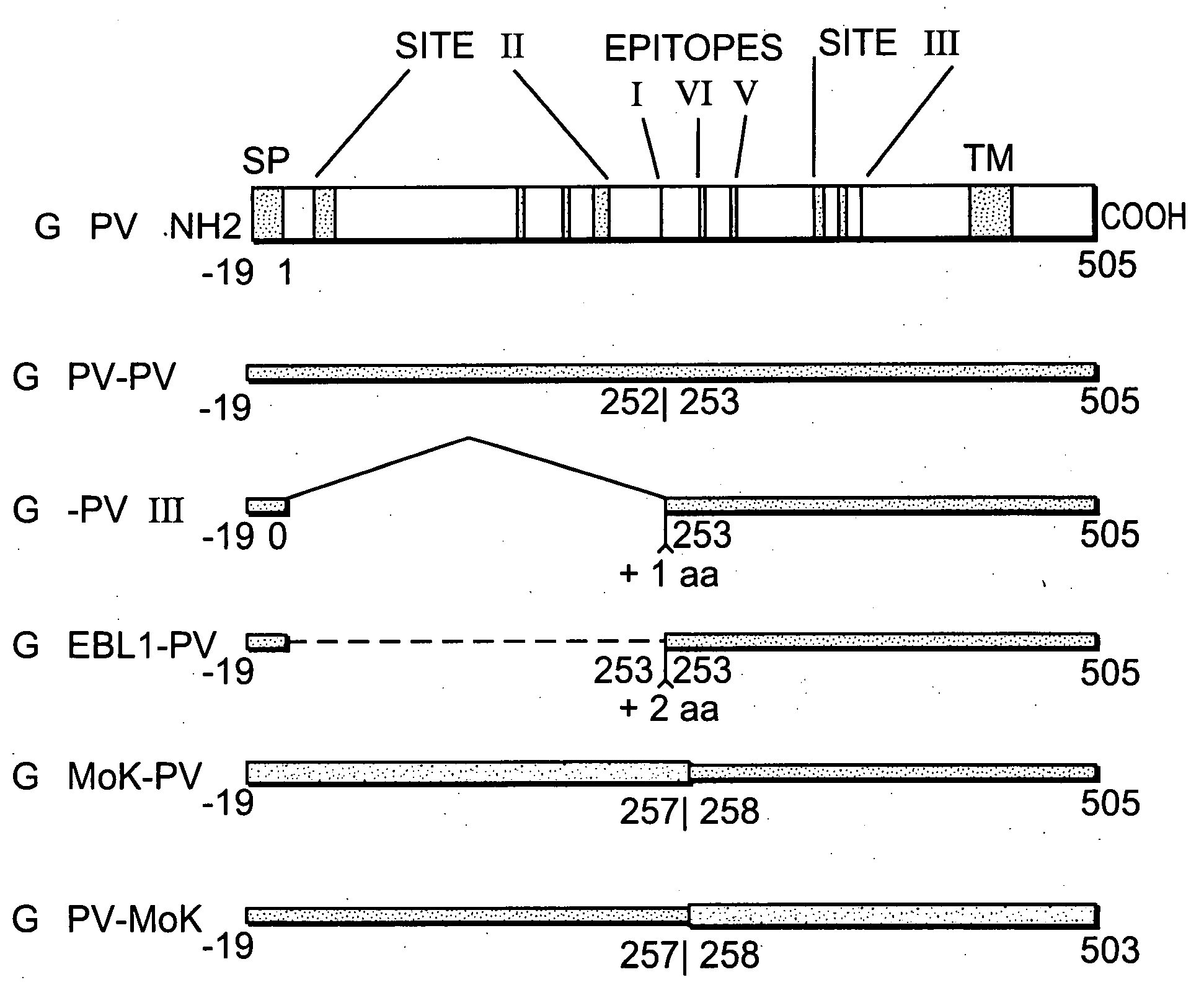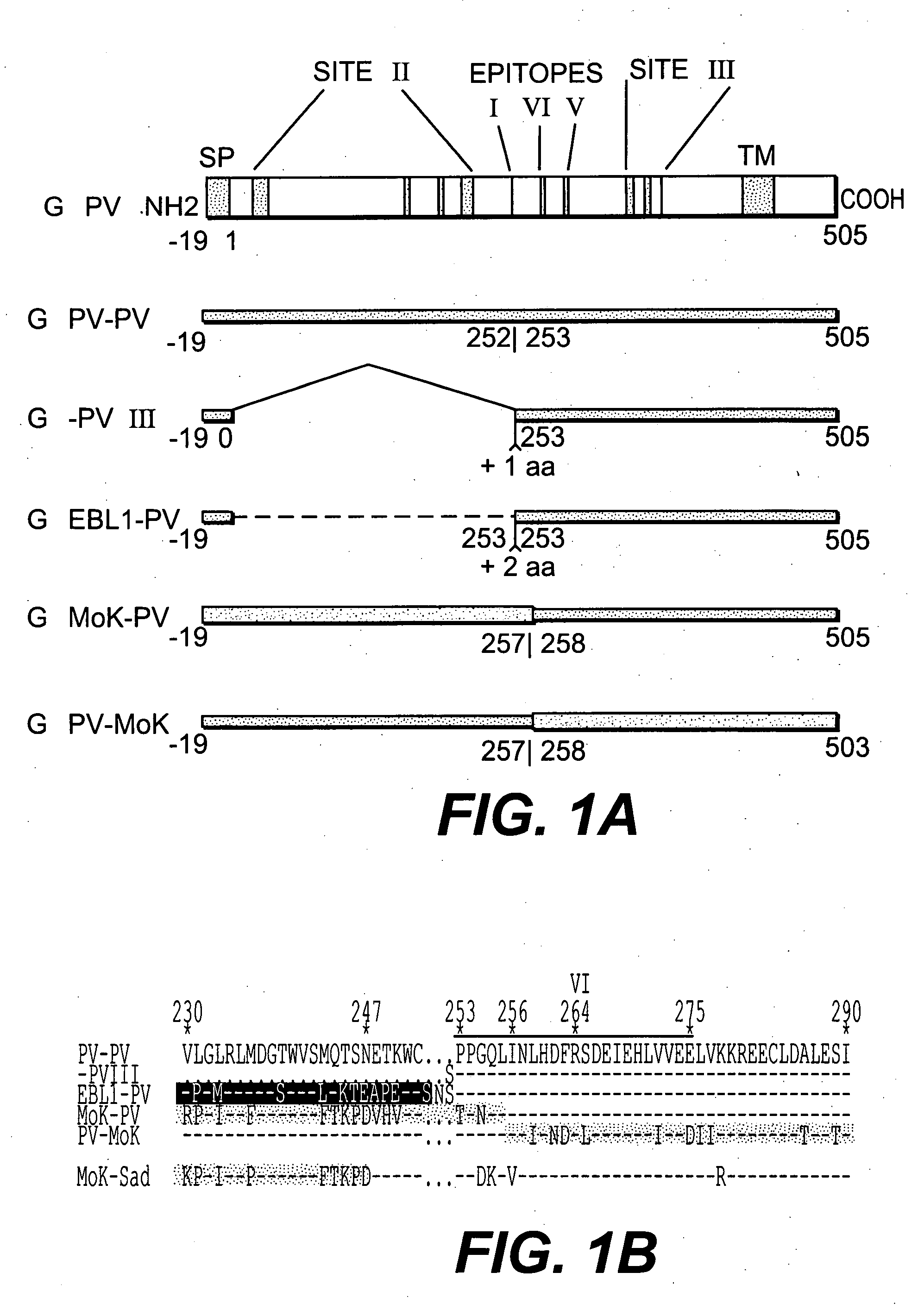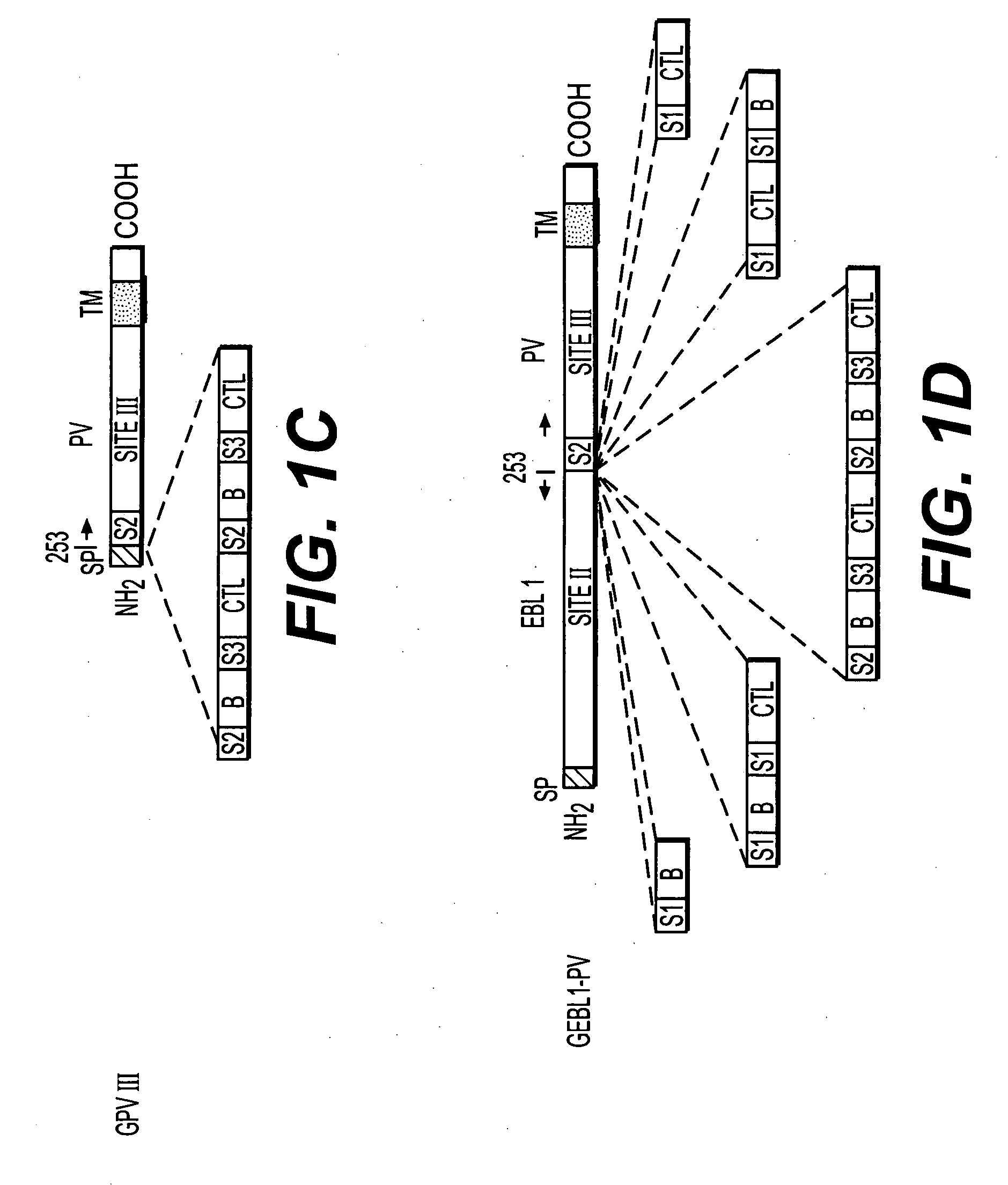Chimeric lyssavirus nucleic acids and polypeptides
a technology of lyssavirus and nucleic acids, applied in the field of chimeric lyssavirus nucleic acids, chimeric polypeptides and proteins, can solve the problems of ineffective gt4, many vaccine strains are not effective against gt2 or gt3, and the rabies virus is infecting all warm-blooded animals, so as to broaden the spectrum of protection against rabies-related diseases, increase the level of immun
- Summary
- Abstract
- Description
- Claims
- Application Information
AI Technical Summary
Benefits of technology
Problems solved by technology
Method used
Image
Examples
example 1
Transient Expression of Lyssavirus G Genes
[0133]Plasmids containing homogeneous (pGPV-PV), truncated (pG-PVIII), and chimeric (pGEBL1-PV, pGMok-PV and pGPV-Mok) lyssavirus G genes were used to transfect Neuro 2a cells. Cell staining by indirect immunofluorescence is reported in FIG. 2 and can be summarized as follows.
[0134]After transfection with pGPV-PV, antigen was detected with PV PAb (FIG. 2A), PV D1 MAb (FIG. 2B), or PV E12 MAb (not shown), mostly at the cell membrane (similar results with non-permeabilized cells, data not shown) and very few detected with 6A1 MAb (FIG. 2C). Cells transfected with pG-PVIII were round in shape and completely stained (both cytoplasm and membrane) with PV PAb (FIG. 2D) or 6A1 MAb (FIG. 2F), but not with PV D1 MAb (FIG. 2E). Cells transfected with pGEBL1-PV were stained mostly at the cell membrane with PV PAb (FIG. 2G), PV D1 MAb (FIG. 2H), or EBL-1 PAb (FIG. 21). Cells transfected with pGMok-PV were stained (mainly at the membrane) with PV PAb (FI...
example 2
Induction of IL-2-Producing Cells
[0137]The ability of the plasmids, pGPV-PV, pG-PVIII, pGEBL1-PV, pGMok-PV and pGPV-Mok to induce IL-2-producing cells was assayed and the results are shown in FIG. 4. Plasmids with the site III part of PV, whether unfused (pG-PVIII) or with any lyssavirus site II part (PGPV-PV, pGEBL1-PV and pGMok-PV), efficiently induced IL-2 producing cells (240 to 550 mU / ml). This was true even for pG-PVIII, which, however, had only low efficiency for both cell transfection (see above) and antibody induction (see below). For the chimeric plasmids EBL1-PV and Mok-PV, the T-cell response was greater after stimulation with inactivated and purified PV than with EBL-1b or Mok viruses. This was not due to the quality of the purified antigens because immunization of BALB / c mice with PV, EBL-1b, or Mok inactivated and purified virus followed by in vitro stimulation with the same antigen induced similar levels of IL-2 production (PV: 250 mU / ml, EBL-1b: 350 mU / ml and Mok: 4...
example 3
Serological Assays
[0138]The truncated pG-PVIII plasmid did not induce the production of rabies antibodies, when assayed by RFFIT and ELISA. However when IL-2 was injected together with pG-PVIII, and then alone 7 days later, antibodies were detected on day 21 only by ELISA (data not shown). Thus, the site III part was expressed in vivo and induced a weak production of non-neutralizing antibodies, which was boosted by exogenous IL-2.
[0139]In contrast, when the site III part of PV was linked with the homologous site II part, as in pGPV-PV, it displayed strong immunogenicity. A single injection of pGPV-PV plasmid into mice resulted in high levels of VNAb measured 27 days later against both the homologous PV and CVS viruses and the heterologous EBL-2b virus (FIG. 5A). The antibody isotype induced was mainly IgG 2a, but a weak IgG 1 response was also observed (data not shown). However, the correlation between VNAb titers against PV was stronger with IgG 2a (r=0.974) than with IgG 1 titer ...
PUM
| Property | Measurement | Unit |
|---|---|---|
| weight | aaaaa | aaaaa |
| weight | aaaaa | aaaaa |
| weight | aaaaa | aaaaa |
Abstract
Description
Claims
Application Information
 Login to View More
Login to View More - R&D
- Intellectual Property
- Life Sciences
- Materials
- Tech Scout
- Unparalleled Data Quality
- Higher Quality Content
- 60% Fewer Hallucinations
Browse by: Latest US Patents, China's latest patents, Technical Efficacy Thesaurus, Application Domain, Technology Topic, Popular Technical Reports.
© 2025 PatSnap. All rights reserved.Legal|Privacy policy|Modern Slavery Act Transparency Statement|Sitemap|About US| Contact US: help@patsnap.com



